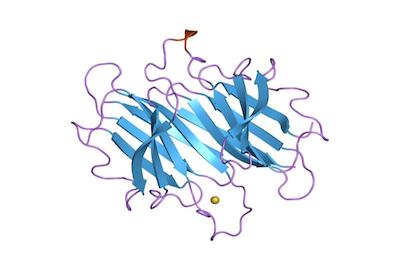Ionis’ Inotersen NDA Accepted for Priority Review by the FDA
January 10, 2018
Source: Prnewswire;
 647
647

Ionis Pharmaceuticals, Inc. (NASDAQ: IONS) announced that its New Drug Application (NDA) for inotersen has been accepted for Priority Review by the U.S. Food and Drug Administration (FDA). Inotersen is an investigational drug for the treatment of patients with hereditary TTR amyloidosis (hATTR). Priority Review is granted by the FDA to drugs with the potential to address a serious condition and, if approved, would provide a significant improvement in safety or effectiveness of the treatment, prevention, or diagnosis of a serious condition. The FDA has set a Prescription Drug User Fee Act (PDUFA) date of July 6, 2018.
"TTR amyloidosis is a progressive, fatal disease with very limited treatment options. Receiving Priority Review in the U.S. and Accelerated Assessment in the EU for inotersen shows that the regulatory agencies recognize the high unmet need and the urgency to identify effective therapies to treat patients with this devastating disease," said Sarah Boyce, chief business officer of Ionis Pharmaceuticals. "We continue our launch preparations for inotersen and are on track to launch inotersen promptly in the U.S. and EU if approved."
"We have been working closely with both the FDA and the EMA following the completion of our Phase 3 study to expedite the regulatory review timelines for inotersen," said Brett Monia, Ph.D., senior vice president of drug discovery and franchise leader for oncology and rare diseases at Ionis Pharmaceuticals. "Today's outcome reflects our strong relationship with regulators and the quality and completeness of our regulatory submissions. It also reflects the potential for inotersen to serve a major unmet medical need based on the results of our Phase 3 study, which demonstrated early and sustained benefit to patients treated with inotersen in multiple aspects of their disease, including quality of life."
ABOUT INOTERSEN
Inotersen is an antisense drug designed to reduce the production of transthyretin, or TTR, to treat patients with TTR amyloidosis (ATTR), a severe, rare and fatal disease. In patients with ATTR, both the mutant and wild-type (wt) TTR builds up as fibrils in tissues, such as the peripheral nerves, heart, gastrointestinal system, eyes, kidneys, central nervous system, thyroid and bone marrow. The presence of TTR fibrils interferes with the normal functions of these tissues. As the TTR protein fibrils enlarge, more tissue damage occurs and the disease worsens, resulting in poor quality of life and eventually death.
The FDA previously granted inotersen Orphan Drug Designation and Fast Track Status. A Marketing Authorization Application (MAA) has been submitted to the European Medicines Agency, which has granted Accelerated Assessment and Orphan Drug Designation to inotersen for the treatment of patients with ATTR.
ABOUT INOTERSEN PHASE 3 CLINICAL STUDY
Inotersen completed a Phase 3 study, NEURO-TTR, in patients with polyneuropathy due to hereditary TTR amyloidosis (hATTR) in May 2017. Results from the study demonstrated benefit compared to placebo across both primary endpoints of the study: the Norfolk Quality of Life Questionnaire-Diabetic Neuropathy (Norfolk QoL-DN) and the modified Neuropathy Impairment Score +7 (mNIS+7) at both eight and 15 months of treatment. In addition, consistent and significant benefit was observed in both the Norfolk-QoL-DN and mNIS+7, independent of disease stage, types of mutation, previous treatment with TTR protein stabilizers or presence of cardiomyopathy at the beginning of the study. Inotersen-treated patients benefited significantly in the quality of life primary endpoint with 50% of patients experiencing improved scores compared to baseline and a mean difference in magnitude of 11.68 points, compared to placebo-treated patients, at 15 months of treatment (mean change from baseline of 0.99 vs. 12.67, p<0.001). In addition, clinically meaningful benefit compared to placebo was observed in the SF-36 physical component score, a measure of general health quality of life. Inotersen-treated patients also benefited significantly in the co-primary endpoint of disease control, mNIS+7, with 47% of patients experiencing improved or stable scores compared to baseline and a mean difference in magnitude of 19.73 -points, compared to placebo-treated patients, at 15 months of treatment, (p < 0.001).
Two key safety issues were identified during the study: thrombocytopenia and safety signals related to renal function. Enhanced monitoring was implemented during the study to support early detection and management of these issues. Serious platelet and renal events were infrequent and easily managed with routine monitoring, which has proven effective since implementation. Other serious adverse events were observed in 24.1% of inotersen-treated patients and 21.7% of placebo-treated patients. No cumulative toxicities have been identified with long-term exposure.
Adverse events occurring in >=10% of patients and twice as frequently in inotersen-treated patients compared with placebo-treated patients included thrombocytopenia/platelet count decreases, nausea, pyrexia, chills, vomiting, and anemia. Injection site reactions accounted for less than 1% of all injections and were mild or moderate in severity. There were no discontinuations due to injection site reactions. The overall mortality rate in the NEURO-TTR study was 2.9% and was lower than overall mortality rates reported in other studies in hATTR patients. There were a total of five deaths in the study, five (4.7%) in the inotersen arm and zero in the placebo arm. Four deaths in the inotersen arm were associated with disease progression and considered unrelated to treatment. As previously reported, there was one fatal intracranial hemorrhage in conjunction with serious thrombocytopenia. No serious thrombocytopenia was observed following implementation of more frequent monitoring.
By DduRead more on
- AZ’s Farxiga Gets FDA Priority Review For Heart Failure January 8, 2020
- Global Recall of CyPass Micro-Stent by Alcon September 3, 2018
- Breakthrough Device Designation Granted to Digital Intervention for Alzheimer’s August 27, 2018
- FDA Approved Eye Drop Oxervate to Treat Neurotrophic Keratitis August 27, 2018
- Experimental Ebola Treatments Approved by Congo as it Sees Flare-Up in Cases August 24, 2018
your submission has already been received.
OK
Subscribe
Please enter a valid Email address!
Submit
The most relevant industry news & insight will be sent to you every two weeks.



